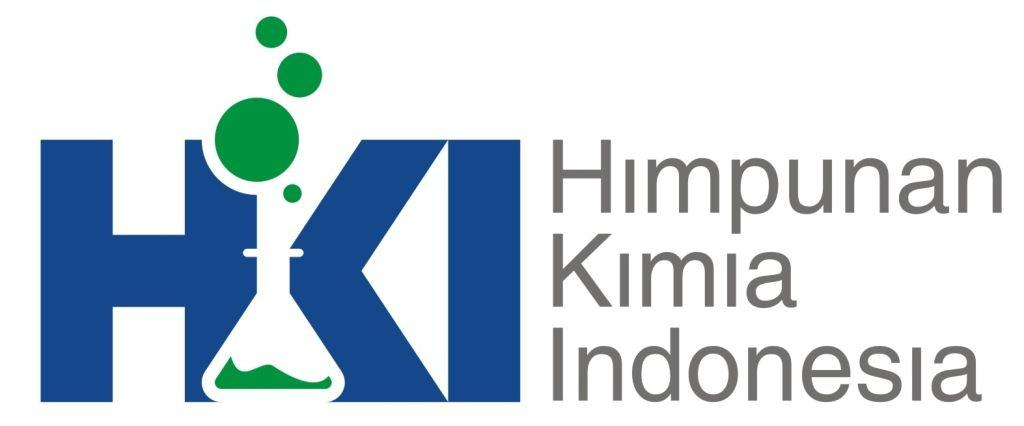Synthesis and Characterization of Hydroxyapatite from Green Mussel Shell with Sol-Gel Method
Abstract
Hydroxyapatite (HAp) is a major component of bones and teeth. HAp is widely used to repair, fill, extend, and reconstruct damaged bone tissue. HAp is used for bone and dental implants, so it is necessary to synthesize HAp. HAp synthesis can utilize green mussel shell waste as a calcium precursor. This research synthesized HAp from a green mussel shell using the sol-gel method. The controlled synthesis parameter was pH, and the variable being compared was the heating temperature at 900 and 1100 °C. The HAp products were characterized by an X-ray diffractometer (XRD), Fourier-transform infrared spectrophotometer, and scanning electron microscope. The results showed that HAp was formed at alkaline pH, namely at pH 11. The XRD pattern showed that Hap was formed along with type A apatite carbonate, octacalcium phosphate, α- and β-tricalcium phosphate. The crystallinity was increased by raising the temperature and prolonging the heating time. The quality of HAp will improve with increasing crystallinity, and increasing the temperature will also raise the amount of HAp formed.
Keywords
References
Adak, M. D., & Purohit, K. M. (2011). Synthesis of nano-crystalline hydroxyapatite from dead snail shells for biological implantation. Organs, 25(3):101-106.
Aoki H. (1991). Science and Medical Applications of Hydroxyapatite. Tokyo (JP): Tokyo Medical and Dental Univ.
Arcos, D., & Vallet-Regí, M. (2020). Substituted hydroxyapatite coatings of bone implants. J Mater Chem B, 8(9):1781–1800. doi:10.1039/c9tb02710f.
Arifianto., Nikmatin, S., & Langenati, R. (2006). Pengaruh atmosfer dan suhu sintering terhadap komposisi pelet hidroksiapatit yang dibuat dengan sintesa kimia dengan pelarut air dan SBF. Jurnal Sains Materi Indonesia, Edisi Khusus, 166 - 173.
Bernache-Assolant, D., Ababou, A., Champion, E., & Heughebaert, M. (2002). Sintering of calcium phosphate hydroxyapatite Ca10(PO4O)6(OH)2 [internet]. [diunduh 2012 Des 1]. Tersedia pada: http://www.elsevier.com.
Charlena, Suparto, I. H., & Putri, D. K. (2015). Synthesis of hydroxyapatite from rice fields snail shell (Bellanya javanica) through wet method and pore modification using chitosan. Procedia Chemistry, 17:27–35.doi: 10.1016/j.proche.2015.12.120.
Charlena, Sukaryo, S. G., & Zuhfria, M. I. (2016). Hydroxyapatite Coating on Alloys CoCrMo-TiN with Sol-Gel Method. IJFAC, 1(3):55-60. doi: 10.24845/ijfac.v1.i3.55
Cox, S. C., Jamshidi, P., Grover, L. M., & Mallick, K. K. (2014). Low temperature aqueous precipitation of needle- like nanophase hydroxyapatite. Journal of Materials Science: Materials in Medicine, 25(1): 37–46.
Cullity, B. D., & Stock, S. R. (2001). Elements of X-Ray Diffraction. New Jersey (US): Prentice Hall.
Dahlan, K., Prasetyanti, F., & Sari, Y. W. (2009). Sintesis hidroksiapatit dari cangkang telur menggunakan dry method. J Biofisika. 5(2):71-78.
Gergely, G. G., Wéber, F., Lukács, I., Tóth, A. L., Horváth, Z. E., Mihály, J., & Balázsi, C. (2010). Preparation and characterization of hydroxyapatite from eggshell. Ceramics International, 36(2): 803–806.
Hidayat, Y., Maddu, A., & Soedjoko, D. S. (2006). Spektroskopi Fourier transform infrared (FTIR) senyawa kalsium fosfat pengaruh ion F- dan Mg2+ hasil presipitasi. J Biofisika, 1:21-27.
Kehoe, S., (2008). Optimization of hydroxyapatite (HAp) for orthopaedic application via the chemical precipitation technique [tesis]. Dublin (IE): Dublin City University.
Khoirudin, M., Yelmida, & Zultiniar. (2015). Sintesis dan karakterisasi hidroksiapatit (HAp) dari kerang darah (Anadaragranosa) dengan proses hidrotermal. Jurnal Online Mahasiswa Fakultas Teknik, 2(2): 1–8.
Krishna, S. R., Siddharthan, A., Seshadri, S. K., & Kumar, S. (2007). A novel route for synthesis of nanocrystalline hydroxyapatite from eggshell waste. Mat Med. 18:1735-1743.
Nurlaela, A., Dewi, S. U., Dahlan, K., & Soejoko, D. S. (2014). Pemafaatan Limbah Cangkang Telur Ayam dan Bebek sebagai Sumber Kalsium untuk Sintesis Mineral Tulang. Jurnal Pendidikan Fisika Indonesia, 10(2014) 81-85. doi: 10.15294/jpfi.v10i1.3054.
O’Hare, P., Meenan, B. J., Burke, G. A., Byrne, G., Dowling, D., & Hunt, J. A., (2010). Biological responses to hydroxyapatite surfaces deposited via a co-incident microblasting technique. Biomaterials, 31(3):515–522. doi:10.1016/j.biomaterials.2009.09.067.
Oladele, I., Agbabiaka, O., Olasunkanmi, O., Balogun, A., & Popoola, M. 2018. Non-synthetic sources for the development of hydroxyapatite. J Appl Biotechnol Bioeng. 5(2):88–95. doi:10.15406/jabb.2018.05.00122.
Pankaew, P., Hoonnivathana, E., Limsuwan, P., &Naemchanthara, K. (2010). Temperature effect on calcium phosphate synthesized from chicken eggshells and ammonium phosphate. Journal of Applied Sciences, 10(24): 3337–3342. doi: 10.3923/jas.2010.3337.3342.
Purnama, E. F., Nikmatin, S., & Langenati, R. (2019). Pengaruh suhu reaksi terhadap derajat kristalinitas dan komposisi hidroksiapatit dibuat dengan media air dan cairan tubuh buatan (synthetic body fluid). Jurnal Sains Materi Indonesia, 0, 154-159. http://dx.doi.org/10.17146/jusami.2006.0.0.5078.
Rana, M., Akhtar, N., Rahman, S., Jamil, H. M., & Asaduzzaman, S. M. (2017). Extraction of hydroxyapatite from bovine and human cortical bone by thermal decomposition and effect of gamma radiation: a comparative study. International Journal of Complementary & Alternative Medicine, 8:00263.
Sadat-Shojai, M., Khorasani, M. T., Dinpanah-Khoshdargi, E., & Jamshidi, A. (2013). Synthesis methods for nanosized hydroxyapatite with diverse structures. Acta Biomater, 9(8):7591–7621. doi:10.1016/j.actbio.2013.04.012.
Salleh, F. M., Sulong, A. B., Muhamad, N., Mohamed, I. F., Mas’Ood, N. N., & Ukwueze, B. E. (2017). Co-Powder Injection Moulding (Co-PIM) Processing of Titanium Alloy (Ti-6Al-4V) and Hydroxyapatite (HA). Procedia Eng. 184:334–343. doi:10.1016/j.proeng.2017.04.103.
Siregar, R. F. & Sulistyowati, E. (2019). Karakteristik Hidroksiapatit Porous dari Prekursor Cangkang Keong Sawah dan Bahan Porogen Pati Sukun. Eksergi, 16(2): 59–64.
Soejoko, D. S. & Wahyuni, S. (2002). Spektroskopi inframerah senyawa kalsium fosfat hasil presipitasi. Makara Sains. 6(3):117-120.
Suchanek, W., Byrappa, K., Shuk, P., Riman, R., Janas, V., & Tenhusein, K. (2004). Mechanochemical-hydrothermal synthesis of calcium phosphate powders with coupled magnesium and carbonate substitution. Journal of Solid State Chemistry, 177: 793–799. doi: 10.1016/j.jssc.2003.09.012.
Vazquez, C. G., Barba, C. P., & Munguia, N. (2005). Stochiometric hydroxyapatite obtained by precipitation and sol gel processes. Investigaci’ on Revista Mexiana De F’isica, 51(3):284-239.
Wu, S. C., Tsou, H. K., Hsu, H. C., Hsu, S. K., Liou, S. P., & Ho, W. F. 2013. A hydrothermal synthesis of eggshell and fruit waste extract to produce nanosized hydroxyapatite. Ceramics International, 39(7):8183–8188.
DOI: 10.15408/jkv.v8i2.27494
Refbacks
- There are currently no refbacks.
Copyright (c) 2022 Charlena Charlena

This work is licensed under a Creative Commons Attribution-ShareAlike 4.0 International License.

